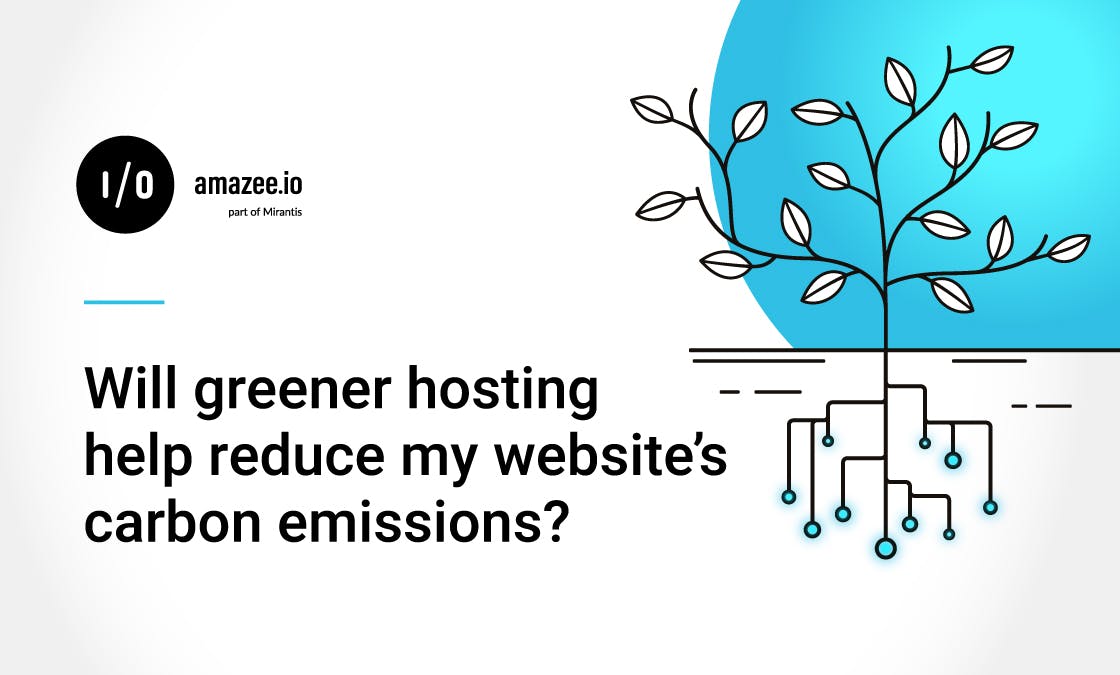Sophia Harris
|
Sep 29, 2022
|5 min read
Search Topic

Many people don’t realize this, but websites do, in fact, have a carbon footprint - sometimes a very large one. If a website is very complex and takes a lot of energy, it may have a significant impact on the climate - and when you take into account the number of sites on the internet as a whole, we’re facing a very big problem.
Climate change is one of the most urgent problems in our modern world, and unfortunately, websites have the potential to contribute to the problem. However, the good news is that awareness of the problem is growing because of our current climate crisis, and companies globally are making efforts to reduce their impact and help lower CO2 levels. Luckily, many companies are realizing that something needs to be done and taking steps toward a greener web overall. We are one of those companies.
For our customers, we aim to do the most for their businesses while doing the least amount of harm to the environment. We want to maximize our impact on their teams and businesses, as we simultaneously make sure that our environmental footprint is minimal, if present at all. Here’s what we’re doing to be part of the solution.
Did you know that one of the biggest contributors to carbon emissions is in the actual hosting of physical data centers and servers? amazee.io doesn’t have any of our own; Instead, we rent them from AWS, Google, and Azure, some of which are totally carbon neutral, and some of which are taking big steps to get there. Our customers actually have a choice when working with us, and if they want to stay carbon-neutral, we can make sure all their projects are hosted with Google. According to their sustainability statement, all Google operations are carbon neutral, and they aim to be carbon-free by 2023. We give customers the choice and freedom to understand exactly what their carbon footprint would be with each provider, and to choose accordingly. Their applications will then run in the data center of their choosing.
amazee.io does run some infrastructure, like monitoring and logging and our Lagoon Core, for ourselves. This is necessary to stay up and running. We do this on Google Cloud, which uses 100% renewable energy, so we feel good about that. Running this infrastructure is necessary for us, so we decided to do so in the most environmentally-friendly way possible and work with a provider that could guarantee 100% renewable energy. We are proud to report that our platform runs on entirely renewable energy, as of 2022.
Think of that common phrase, “use it or lose it.” We don’t keep environments active if they’re not contributing to your goals or if they’re not being used. If a development environment is using energy but no one is using it or it’s not necessary or functional, this is wasteful and should be addressed. We don’t believe in wasting energy that we are not using. Any development environment that is idling is automatically shut down if it’s not being used. By doing this, we can ensure that 100% of the live development environments are functional, active, and necessary. Idling saves energy because by reducing something we don’t need, we save energy.
On this note, we also autoscale all production environments. Production environments are always there and can’t be shut off, like the development environments, but we do scale them down when they’re not needed - for example, at night time, when your site probably won’t get as much traffic. Scaling down the number of servers being used during these lulls helps conserve energy, and this is something we are always doing to reduce carbon emissions, 24/7/365.
Our organization is fully-remote. This means that our energy consumption remains lower overall. The only resource required for our employees to work is a WiFi connection. There’s no driving, commuting, or traveling daily necessary for our employees. This helps us keep gas usage and emissions lower on a daily basis because our employees can work from wherever they want - usually at home!
Additionally, not having a physical workspace means that we don’t need resources like heating, cooling, and powering an entire office every single day. Physical office spaces use more resources than you might guess!
amazee.io uses container-based hosting, which allows us to host and run far more sites and applications than we could using virtual machines. Kubernetes allows us to use our resources in the best, most economical way to reduce cloud waste.
This is because containers use far fewer resources than VMs. Containerization is far more lightweight, energy-efficient, and flexible. Containers allow you to run more on the same server than you could in any other way. This saves significant resources and takes much less power than VMs and other types of servers.
Want to chat about how green hosting can improve your site’s carbon footprint? Contact us today to learn more.

